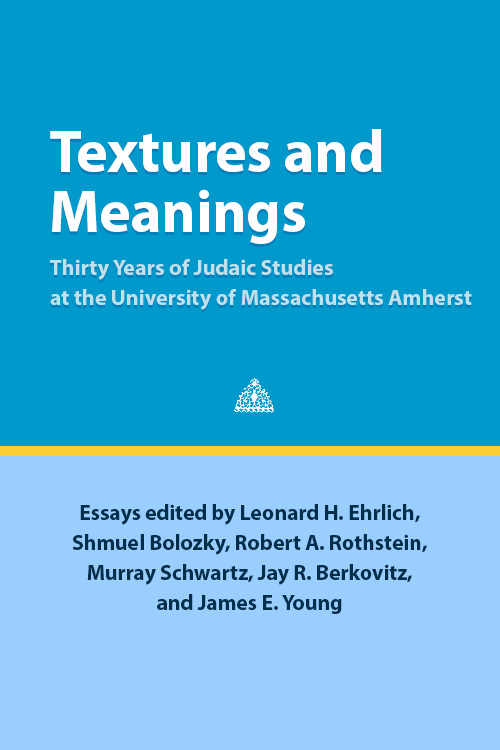When a Day Remembers: A Performative History of Yom ha-Shoah
James Young
This chapter is part of: Leonard H. Ehrlich et al. 2004. Textures and Meanings: Thirty Years of Judaic Studies at the University of Massachusetts Amherst
Download Chapter| Description |
|---|
| The commemoration of the catastrophe is the subject of James Young’s history of Yom Hashoah. Observing how a time of commemoration confers meaning on past events and links disparate past events by their time of commemoration, Young recounts how the establishment and enactment of Yom Hashoah inscribes the memory of the Holocaust “even as it finally nationalizes and secularizes such memory.” His aim, in part, is “to reinvest this day of remembrance with the memory of its origins, of its own historical past.” To do so, Young reviews the debates and controversies that came to define the date and many of its meanings, such as the felt need to separate the memory of the Holocaust from dates marking former disasters, the need to celebrate Jewish heroism, and the need to link the meaning of the disaster with the establishment of the state. Finally establishing the 27th of Nissan as the Day of Remembrance of the Holocaust and Heroism in 1959, the law succeeded in “drawing on a potent combination of religious and national mythologies” to link the heroes of the Shoah with the heroes of Israel independence. Young then goes on to ask vital questions about the actual meaning of Yom Hashoah in performance. “How then is the remembrance day publicly performed? What do people remember in its ceremonies and moments of silence? To what extent do the forms of observance shape remembrance itself?” Using his own participatory experience as one touchstone, he recreates a sense of the forms and varieties of memory brought together in the unifying gestures of observance. There is a paradox in Young’s final plea for the recognition of multiple memories, for it is the very diversity of memory that enables the myth of a common past to achieve its unifying power. “Unlike monuments in the landscape,” he concludes, “in whose rigid forms memory is too often ossified, the remembrance day can reinvigorate itself and the forms it takes every year.” |
-
Details
Published Published By Aug. 1, 2004 University of Massachusetts Amherst Libraries Citation Young J. 2004. When a Day Remembers: A Performative History of Yom ha-Shoah. In Leonard H. Ehrlich et al. 2004. Textures and Meanings: Thirty Years of Judaic Studies at the University of Massachusetts Amherst
